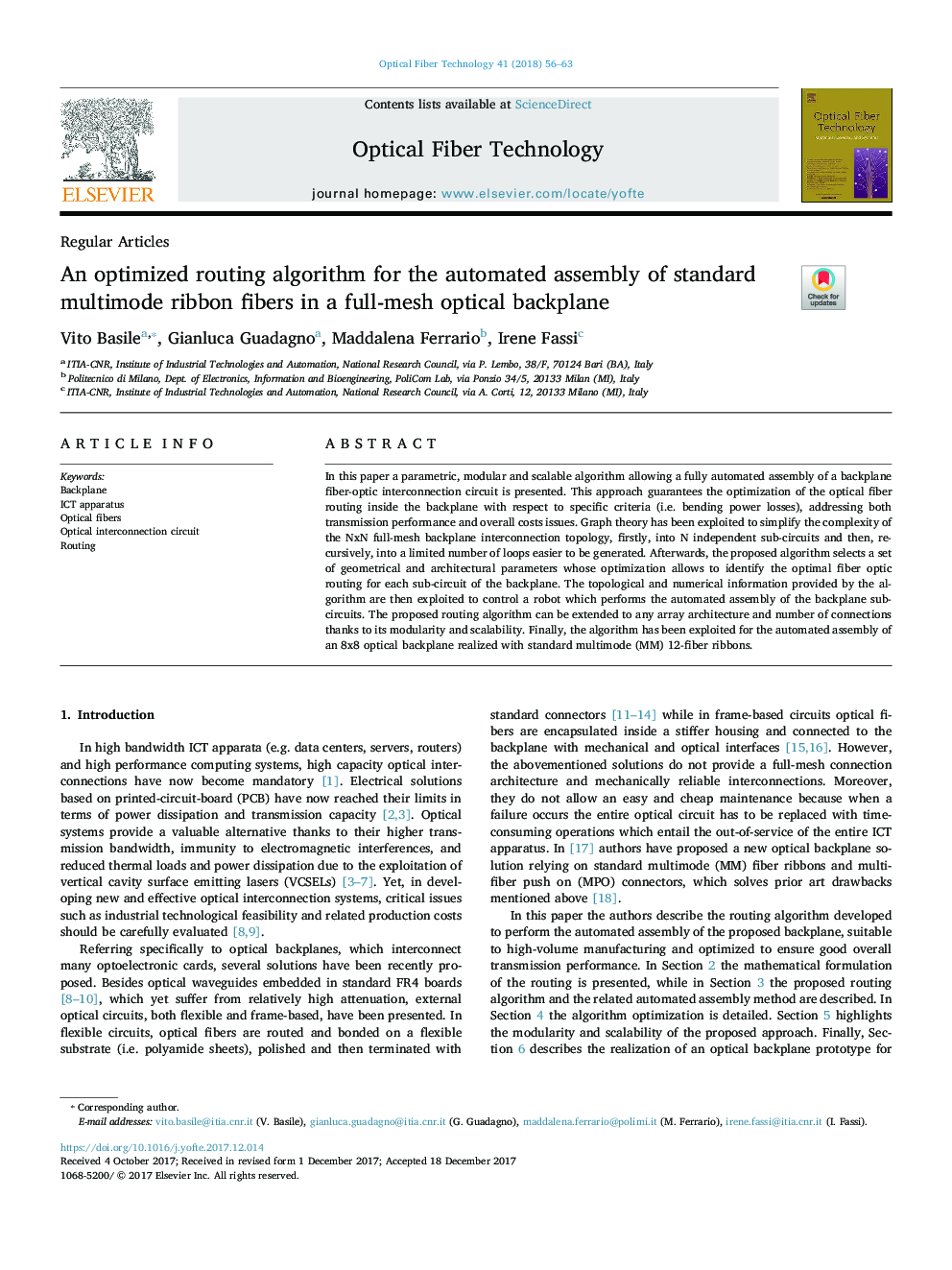| Article ID | Journal | Published Year | Pages | File Type |
|---|---|---|---|---|
| 6888321 | Optical Fiber Technology | 2018 | 8 Pages |
Abstract
In this paper a parametric, modular and scalable algorithm allowing a fully automated assembly of a backplane fiber-optic interconnection circuit is presented. This approach guarantees the optimization of the optical fiber routing inside the backplane with respect to specific criteria (i.e. bending power losses), addressing both transmission performance and overall costs issues. Graph theory has been exploited to simplify the complexity of the NxN full-mesh backplane interconnection topology, firstly, into N independent sub-circuits and then, recursively, into a limited number of loops easier to be generated. Afterwards, the proposed algorithm selects a set of geometrical and architectural parameters whose optimization allows to identify the optimal fiber optic routing for each sub-circuit of the backplane. The topological and numerical information provided by the algorithm are then exploited to control a robot which performs the automated assembly of the backplane sub-circuits. The proposed routing algorithm can be extended to any array architecture and number of connections thanks to its modularity and scalability. Finally, the algorithm has been exploited for the automated assembly of an 8x8 optical backplane realized with standard multimode (MM) 12-fiber ribbons.
Keywords
Related Topics
Physical Sciences and Engineering
Computer Science
Computer Networks and Communications
Authors
Vito Basile, Gianluca Guadagno, Maddalena Ferrario, Irene Fassi,
